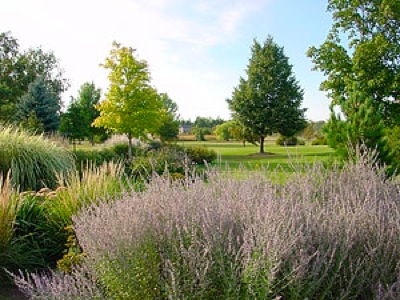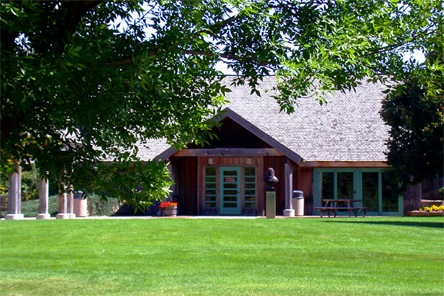Linnaeus Arboretum
Year Built: 1973
Purpose: Place for Students, Home of many indigenous trees in Minnesota
There has been an ongoing tradition of campus beautification at Gustavus. In 1876 trees were planted around the main building after its completion. The college even expressed the importance of campus beauty in the 1915 college catalog. “For natural beauty , the college grounds are well selected and have few superiors. The College Park Association is working to improve the grounds, year by year, according to the plans of the architect.” It also goes along with the arboreta tradition in our country.
People were first skeptical about the creation of the Arboretum. Some were uncertain about planting the trees in such sandy soil, and others wanted to use the land for other purposes. Some of the other discussed ideas for the land were a riding area and stables for horses, a golf course, apple orchard, or black walnut grove. There were also some financial considerations. Before the Arboretum the school had been renting out the land to farmers who were growing soy beans and wheat. In the end Gustavus ended up building the Arboretum because the students wanted an area to walk around near campus and to be able to get away from the dorms.
The first trees were planted around the presidents house in the spring of 1973. At the time the presidents house was near Old Fort Road. The road was unpaved and noise and dust kept reaching their house. The first lady interested in having trees planted to block it all out.
This was the beginning Linnaeus Arboretum. The botany professor a Gustavus, Charles Mason, began developing the land into the Linnaeus Arboretum. It is named after Carl Linnaeus, he lived from 1707-1778, an 18th century Swedish botanist who came up with the standard binomial classification of plants used in botany. The first major change to the Arboretum in 1974 with the planting of 5000 trees on a 13 acre site near the presidents house.In January of 1975 Charles Mason came up for the master plan for the Arboretum. It included contour maps and maps of different soil types. The plan also called for the development of an additional 75 acres, an dividing the area into four sections prairie, pine, deciduous and a section housing imported plants. The plan for the Arboretum was to have all the trees and plants native to Minnesota.
Now the Linnaeus Arboretum is 135 acres with more than 2700 trees and 250 different species. The Arboretum has over 320 million dollars worth of vegetation and has every indigenous tree to Minnesota. It also has the boulder circle which is a huge three billion year old rock dropped by glaciers 12,000 years ago. It also has a log cabin that was built by Swedish pioneers out f White Oak logs in 1866. It was restored and placed in the Arboretum in 1986. Two years later the Interpretive Center was built. Eventually the Arboretum hopes to have a smaller version of the Big Woods that once covered most of the state. There are hardwoods in now that are only 20 years old, but as they grow larger shade will cause the grasses to give way to woodland flowers.

Linnaeus Arboretum




